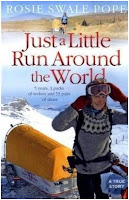Today I suggest a series suitable to read aloud with your kids that some will disagree with, I know some parents hate these books. I have to admit I don’t love them. But I have come to realise they serve a good purpose.
The Rainbow Magic Fairies (books 1-7) are the fairies who give colour to Fairyland and the world. Evil Jack Frost has flung the fairies into the real world, thus depriving fairyland of any colour. Newly found friends, Kristy and Rachel are entrusted to find and rescue the fairies. The books follow a formulaic solution where each fairy is found and returned to Fairyland while the girls avoid or out-trick the goblins who are sent to stop them. After this initial series, many more follow including the Weather Fairies, the Pet-Keeper Fairies, the Party Fairies, etc. etc.
The reasons why many parents dislike these books are the same reasons many children (often girls, but also some boys) love them:
- They are incredibly predictable and use a small range of vocabulary. Perfect for new and hesitant early readers.
- There are hundreds of them. Seriously. We have (graciously given to us when no longer wanted by another family) 56, all of sets of 7. There are at least 200 out now. For children that want to keep reading them again and again, there is no shortage. We always have some out of the library.
- Each only contains 6-7 chapters so even with a young one who is tired at night, a short chapter each night still finishes the book within a week.
My approach with these books has been to read the first two series – 14 books. Then after than if you want to keep reading them you have to do it yourself. This worked with our 8 year old a few years ago – we got her started and then she was off, devouring all of them. Now at 8, she is bored with them. She will read them when our 6 year old gets them from the library, but she has realised they all follow the same plot and they don’t really hold her attention any more.
However, our 6 year old is still in the grip of the world of Rainbow Fairies. Her reading has not progressed quite to her doing it solo (and we are up to book 13), so I may relent and read another series.
The advantage of this series is that if it hooks them, they have ample reading material for at least a year, until they are willing to try other things. Then I will switch to reading aloud other books to her and she can read the Magic Fairies on her own, to her heart’s content!




